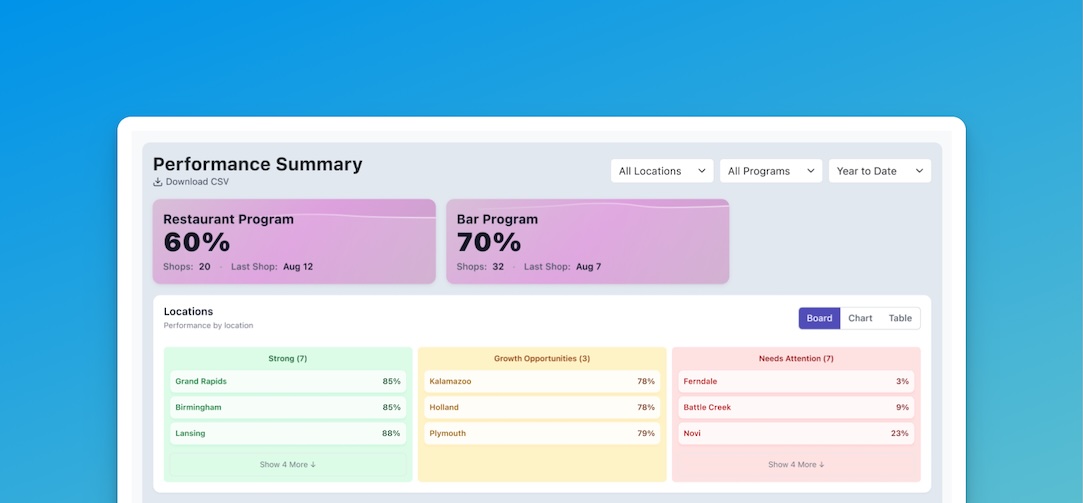
Believe it or not it’s not that hard to improve customer experience (CX) for your business. Naturally as your business grows and changes you’ll make improvements as you go along. But if you’re ready to take an active step at bettering your business—and making more money—all you need is this simple strategy.
Our Formula to Improve Customer Experience
In this blog we’ll explore a simple yet powerful formula designed for business self-improvement. It’s a tried-and-true method that we’ve seen work wonders for companies in any industry—and it can work for yours too!
- Step 1: Start with a Growth Mindset
- Step 2: Find Your Baseline
- Step 3: Identify Areas for Improvement
- Step 4: Set Achievable Goals
- Step 5: Implement Concrete Improvement Strategies
- Step 6: See How You’re Doing
- Step 7: Repeat
Now that we know where we’re going let’s begin.
Start with a Growth Mindset
The first step in any mission to improve customer experience is to get your head straight. Many small business owners cherish their shop—and might feel scared or even offended by the thought of a flaw in its design. Remember nobody’s perfect… and no business is perfect either.
Although perfection shouldn’t be the ultimate goal constant improvement is. In fact measurable growth is characterized by a continual rise in sales customer satisfaction brand awareness and many other metrics. When you and your staff keep steady growth as your primary motivation—instead of the impossible ideal of perfection—you’ll be in a much healthier place. Plus when everyone sees that growth occurring on a regular basis it will spur further motivation to improve. It’s a winning cycle!
So don’t get bummed out when you inevitably find an area of your CX that could use improvement. Instead embrace the opportunity to get better and win more business because of it.
Find Your Baseline
Now that you’re ready to grow it’s time to take the first active step: getting an honest objective understanding of how your CX is currently performing. That way you can establish a baseline to determine whether you’ve improved—and by how much. It allows you to answer the question “Did we improve customer experience?”
But how do you get a good look at your business?
- Analyze sales and marketing data. The easiest and most objective way to gauge your baseline is to make a note of your numbers. How are your current sales? What’s your return on investment (ROI) on various promotional efforts like email marketing? Dig into any metrics you can find to help you evaluate improvement later on.
- Listen to customer feedback. There are many ways to gather information straight from the source. Talk to customers in your store about their experience. Read online reviews and testimonials about your business. Hand out customer surveys and see what people have to say.
- Conduct a CX evaluation. Also called mystery shopping a professional CX evaluation is the secret sauce to improve customer experience. CX evaluations provide you with a truly objective look at your business operations. Plus a trained CX evaluator can give you additional insights that ordinary shoppers can’t.
Remember it’s always better to get a comprehensive holistic look at your customer experience before you make an attempt at improvement. Don’t just pick one of these strategies—use them all to your advantage.
Identify Areas to Improve Customer Experience
With all that information at hand it’s time to start aggregating and analyzing the data. Typically a few key improvement areas will become obvious at a glance. But don’t be afraid to get specific. For example is there a certain offering that isn’t performing as well as others? Are there frequent customer complaints about a particular service? Does your app or online portal cause confusion or frustration for a segment of your prospects? Make note of anything that jumps out.
Then prioritize these items in a list and start creating objectives for each. This is where you’ll begin preparing to improve customer experience across the board. For example one objective might be to improve the item return process. Another objective could be to boost sales on a certain product or increase the number of email sign-ups.
Additionally since you’re digging into the data you’ll also likely find some areas where your business truly shines. Make sure to celebrate those wins when you see them! You and your team will benefit from the recognition.
Set Achievable Goals to Improve Customer Experience
Unfortunately it’s not enough to have a vague set of objectives. It’s absolutely critical to create actionable achievable goals to actually improve customer experience.
The best way to create a strong goal is to use the SMART acronym:
- Specific: Is your goal specific enough to tell if you’ve achieved it? Avoid nebulous goals that start with phrases like “be better.”
- Measurable: Are there quantifiable numbers you can aim for and measure against?
- Achievable: Do you have the ability to make this goal happen? Or is it in someone else’s hands?
- Realistic: Is this goal reasonably achievable? For example you might want to get a million followers on Instagram… but can you attain that? And is it worth it?
- Timely: At what time are you hoping to achieve your goal? Setting a check-in date will give you accountability.
Goals that meet all of these criteria will not only be more achievable but you’ll actually be able to tell if—and when—you’ve reached them. And the more goals you meet the more you and your team will feel motivated to reach for more.
Implement Concrete Improvement Strategies
The next step to improve customer experience is to put some plans into action based on the objectives and goals you’ve already outlined. What are some ways you can meet your goals and therefore fulfill your objectives?
- Remove obstacles. If there are any straightforward outstanding issues in your CX deal with those right away. For example if the pop-up coupon on your website has a typo that undermines potential customers’ trust in your brand fix it!
- Streamline sales. Finding ways to dial in your offerings and sales pitches can take time and testing. But doing the work on this will ultimately pay off significantly—and financially.
- Train staff. Get your team on board with efficient effective training methods. When your team has bought in on your plan they’ll be much more likely to implement and maintain any changes you make to improve customer experience.
- Improve marketing. Now that you’re making marked improvements across the board make sure your sales reflect that. Customers like to hear that their voices are being heard—and that you’re dedicated to bettering your business.
Note that these strategies are merely suggestions to get you started. Improvement strategies will vary depending on your industry the size and style of your business and the specific issues you’re facing. Don’t be afraid to look at your competition and borrow solutions! Your contemporaries can be a valuable resource.
Compare the Numbers & See How You’re Doing
The most important thing to remember is that improving customer experience takes effort… and time. Once you implement your plans give them a while to set in. Depending on how big your business is and how extensive your changes are you may need more or less time to see results. Regardless any significant results will take longer than overnight.
However once you’ve let things settle it’s important to do another numbers check. Take new samples of data from the same sources as you did when establishing your baseline and compare them. How have they changed? Are they improving? Or are they getting worse?
If they’re getting worse… don’t panic. Not every plan to improve customer experience will work. Consider it a test. You can now either give it more time to settle in make adjustments to the strategy or go back to what you had before. Make note of what you do so that you can check in again at a later date and make more adjustments. Note that these same options are available to you if your metrics have stayed the same.
On the other hand if your numbers are improving—congratulations! You’ve achieved your goal to improve customer experience.
Do It Again
The final and most crucial step in this formula is to repeat the entire process over again. This approach isn’t a one-time solution. Rather it’s an ongoing cycle.
You must maintain a continuous growth mindset to achieve continuous growth. To achieve true success for your business it’s essential to consistently revisit and implement each step. This repetition allows for continuous improvement and adaptation to changing market conditions customer feedback and new opportunities. By embracing this iterative process you ensure that your business remains dynamic resilient and positioned for long-term development.
It’s Easy to Improve Customer Experience
Businesses that foster a culture of perpetual growth can easily improve customer experience all the time. By utilizing this simple formula improvements happen naturally quickly and measurably—because their staff feels supported included and celebrated. Remember to create coherent objectives followed up with achievable goals and reasonable strategies. Most importantly use quantifiable metrics to identify improvements when they occur. Then you can enhance your customer experience—and your business—regularly and continually.
Need help getting started? Try contacting a professional CX improvement agency to get the ball rolling.
Subscribe to the Buzz
Receive exclusive insights, tips, and customer experience strategies straight to your inbox.







